Originating from the tropical rainforests of South America, Monstera plants are spectacular house plants. Although nicknamed Swiss cheese plants, these don’t grow or make cheese–the name comes from the hole shapes in the leaves.
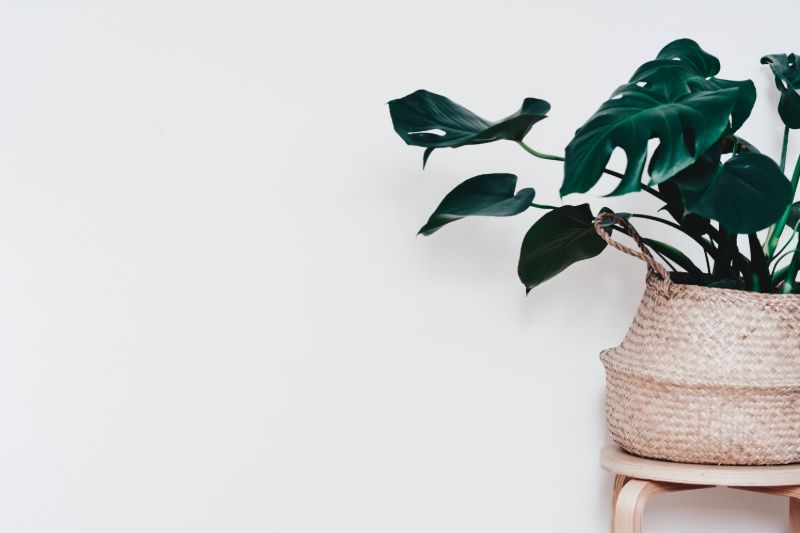
Monstera plants are epiphytic, meaning that they require a host tree to attach to in the wild in order to grow. This enables them to grow up to incredible heights in order to reach sunlight in the jungle.
If you have cats or other pets, you may want to reconsider having Swiss cheese plants. They can be highly toxic to animals and cause discomfort or illness if consumed. Otherwise, they are great to have!

In this article, we’ll bring you an overall view of the different varieties of Monstera plants around as well as advice on growing and maintaining them, how to propagate them, and where to buy them.
Ready to learn more about these magnificent plants? And we’re not using that word lightly!
Monstera Plant Varieties
Monstera plants have become extremely popular as indoor plants and are perfect to green up your home.
At the same time, they are also great aesthetic additions for landscaping. You can easily incorporate them into different landscaping arrangements.
There are many varieties of Monstera plants to choose from and it’s good to know them before we talk about the practical steps of growing them.
1. Monstera Deliciosa
This is the most popular of the Monstera plants, known for its large holey leaves that resemble slits. This one stands out in any room! Its Latin name deliciosa refers to the Mexican breadfruit that it bears.
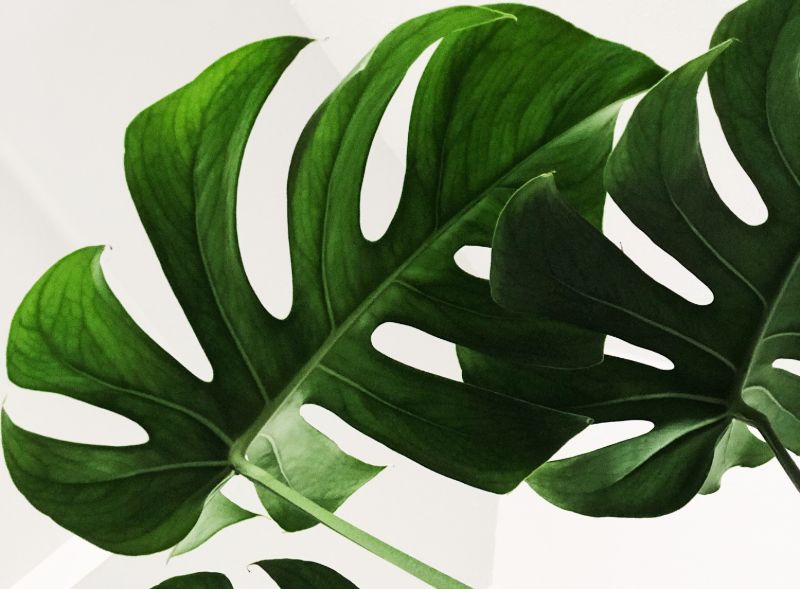
Also known as Swiss cheese plants, these will flower if grown outdoors, and eventually, they will grow into fruits.
2. Monstera Adansonii
This rare variety of the Monstera plant is a beautiful addition to your home and backyard. Also known as the swiss cheese vine, this plant is easy to grow both indoors and out.
You’ll love its stunning large leaves and oval-shaped holes. If grown outdoors, these vines and leaves can become huge!
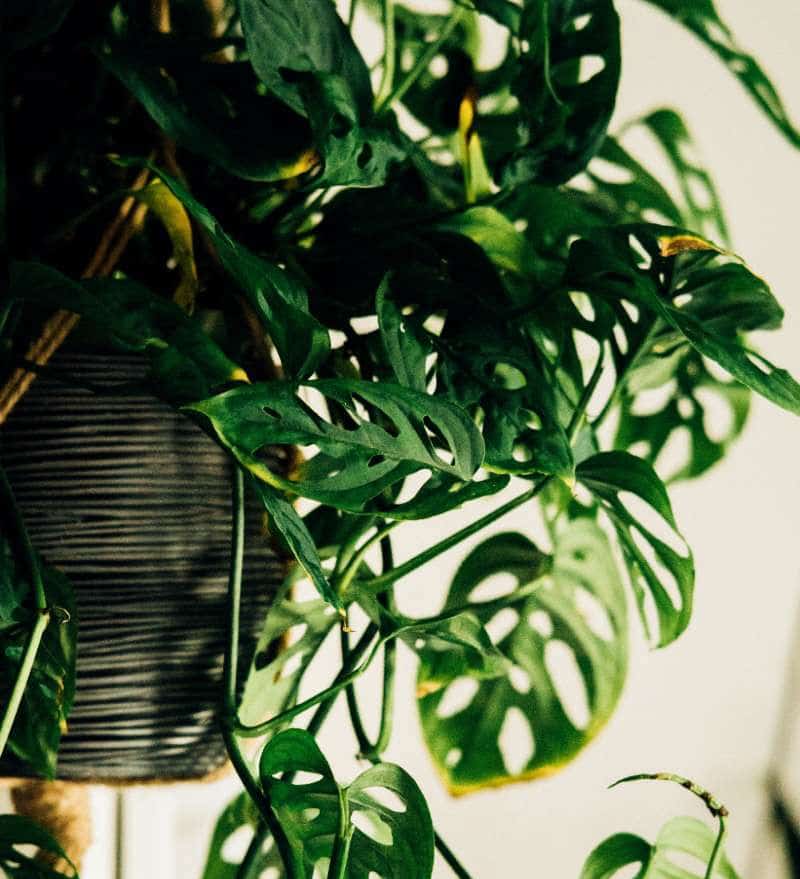
Its climbing properties make it perfect to grow on a garden trellis or gate. It’s also great as a hanging plant, as without any support, the vines will droop and grow towards the ground.
Other names for this species include Monstera obliqua and Monstera expilata.
3. Monstera variegata
This variety also known as Thai constellation derives from a genetic mutation. Variegation is when certain tissues of the plant are not able to produce chlorophyll, thus, causing discoloration.
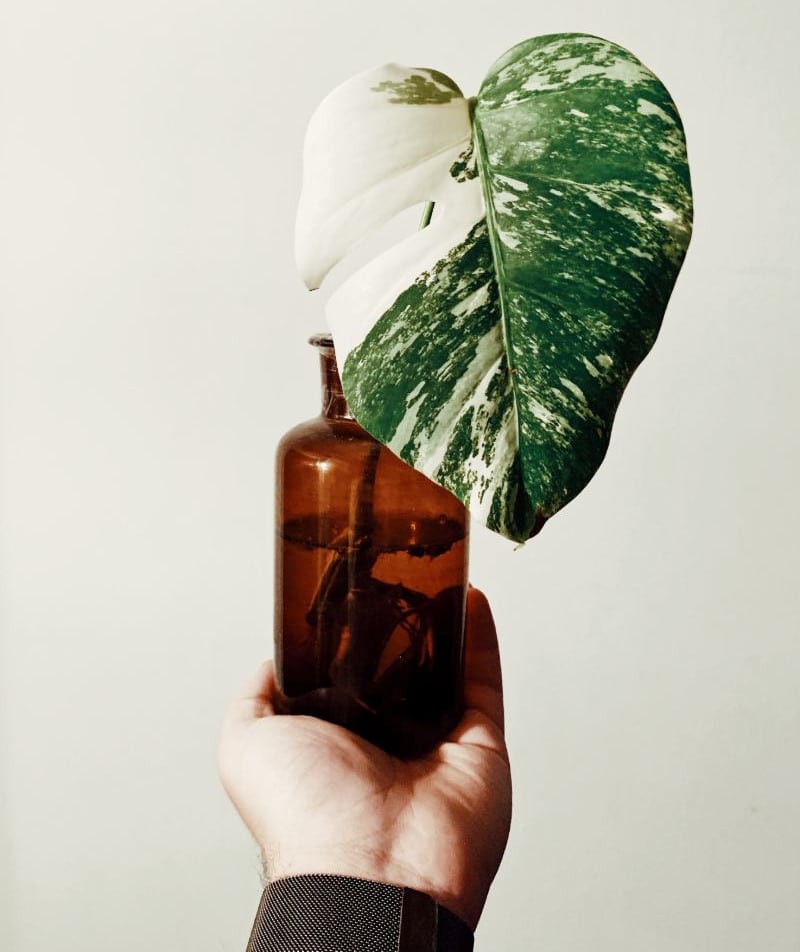
Fact: This beautiful mutation can affect different species of Monstera, making for a stunning tropical plant choice.
Variegated Monstera plants tend to be rarer and some are more expensive than others. But the white paint effect makes these plants a piece of art and a stunning addition to your home.
4. Monstera borsigiana
While similar in appearance to Monstera deliciosa, Monstera borsigiana is smaller in size. It also grows faster if it has the right growing conditions–more on that later. There are many color variations of this plant, such as white and yellow.
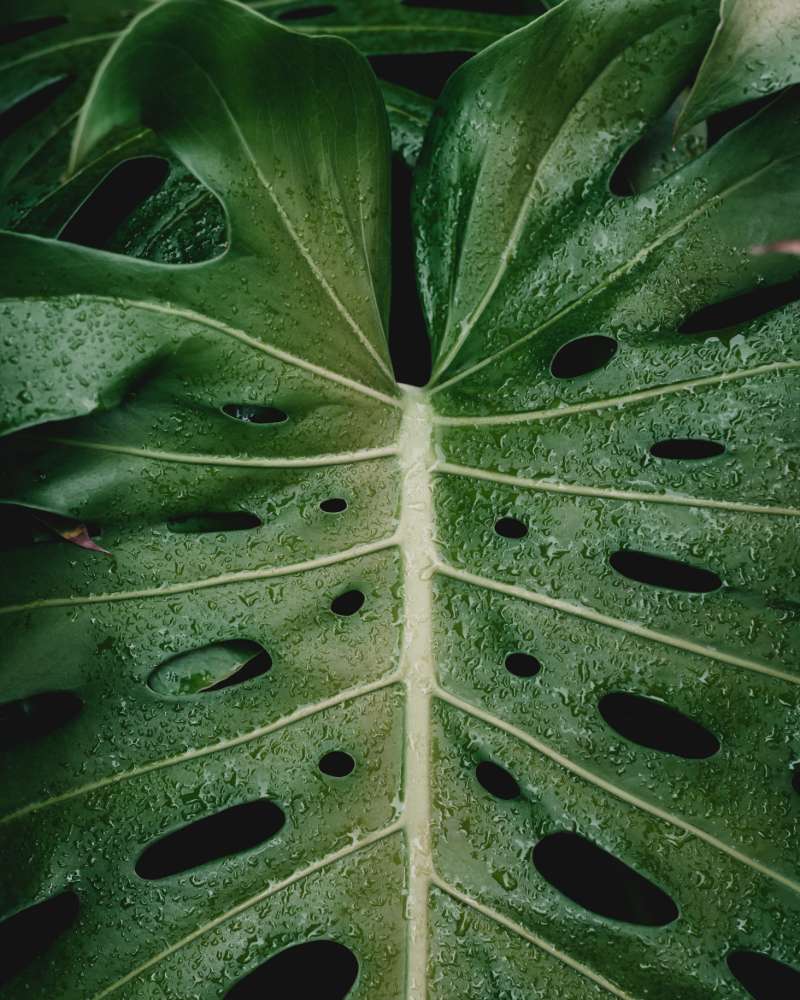
Tip: To distinguish this plant from Monstera d., you can check for stem ruffles and the presence of full circular holes closer to the stem. If you find them, you’re looking at a borsigiana.
5. Rhaphidophora tetrasperma
Nicknamed the Mini Monstera, this is another common variety often mistaken for Monstera deliciosa. Native to Thailand and Malaysia, this plant is not in fact a Monstera species. But it largely resembles one.
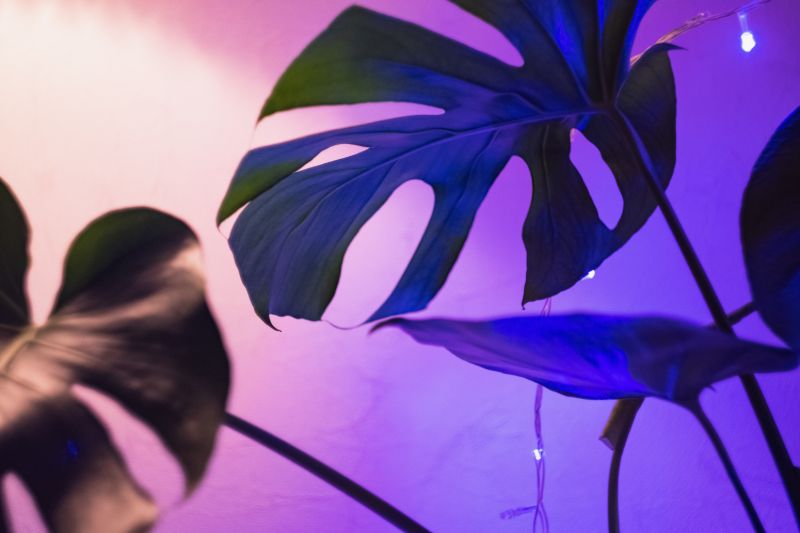
Unlike other Monstera plants, Mini Monsteras have holes that extend to the edges of the leaves. Their color is a beautiful deep shade of green. Usually, they are easier to find in your local garden center than true Monsteras.
Growing Your Monstera Plant
Growing Monstera plants isn’t all that difficult, but you do have to follow a few essential steps.
The most important decision is whether you’ll be growing them outdoors or inside your home.
Let’s start with the factors you want to consider when choosing and growing your Monstera plants.
Plant Height
The height of your Monstera plant is a very important factor. Indoors, these plants only grow up to 3 meters tall. By contrast, in their natural environment, they can grow up to 20 meters.
If you plan to grow them outside but only want a small plant, choose a smaller species just to be sure it won’t overgrow.
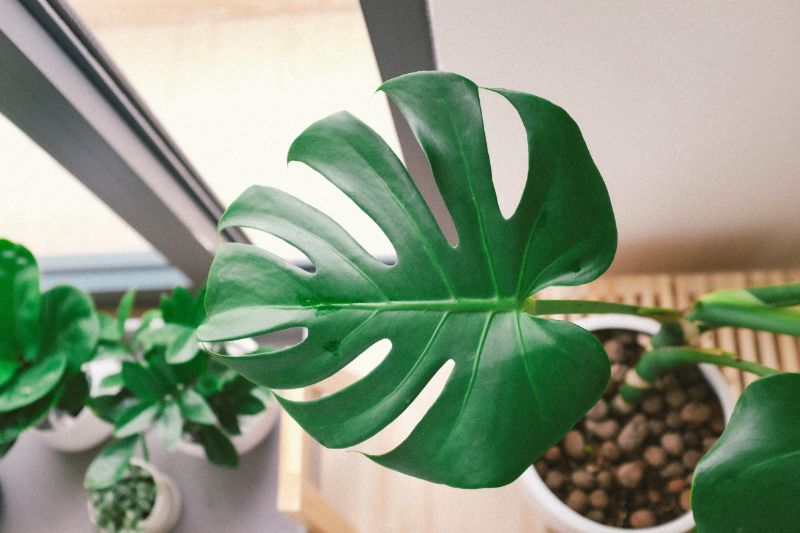
Tip: Adding support to your plant will help it grow to its maximum size. You can also turn it into a hanging plant by letting the vines droop from up high.
You can use a wooden stick or stake to support indoor plants. For your outdoor plants, you can buy a trellis that they can grow around.
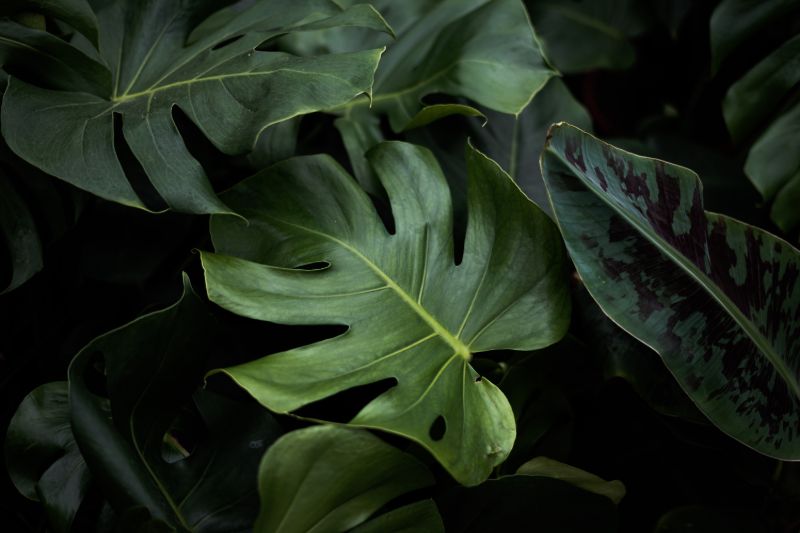
Depending on the Monstera plants you choose, the height can differ significantly. For example, Monstera borsigiana will still grow to a respectable size, though it will have smaller leaves than its more popular cousin Monstera deliciosa.
Good to know: Borsigiana leaves may only grow up to 50cm long indoors. The vine may also only reach a couple of meters in height.
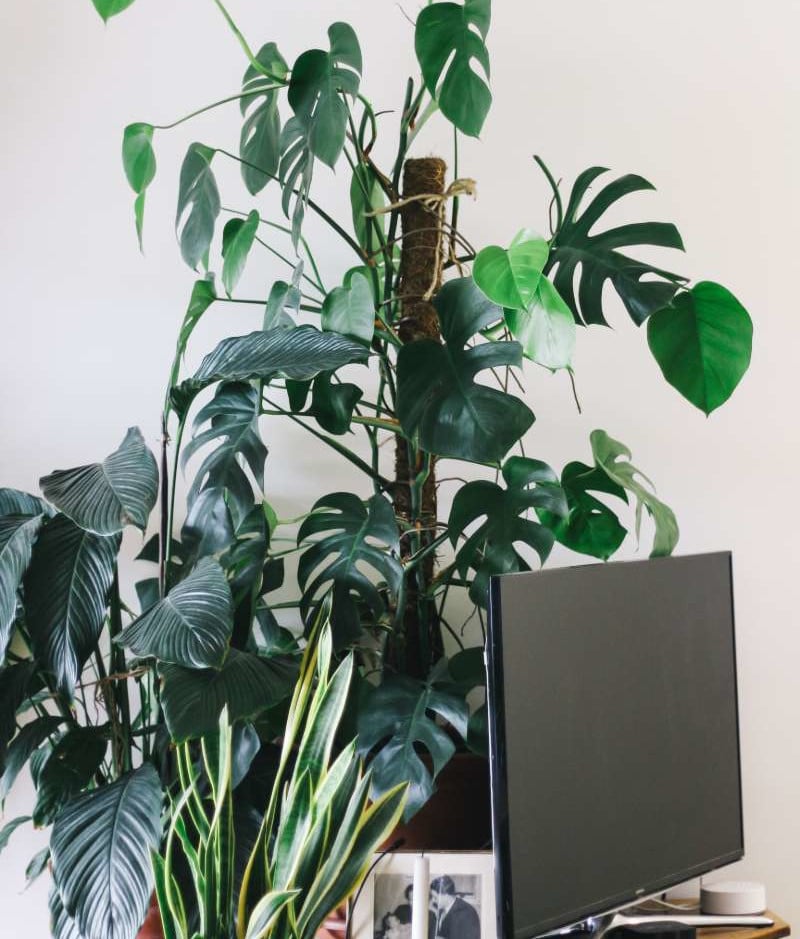
Soil
For indoor Monstera plants, it is important to use a good quality potting soil. The soil should always be kept moist as Monstera plants prefer humid habitats.
Tip: Monitoring the soil’s pH value can be beneficial to your plant. An ideal soil would be acidic, with a pH between 5-6.
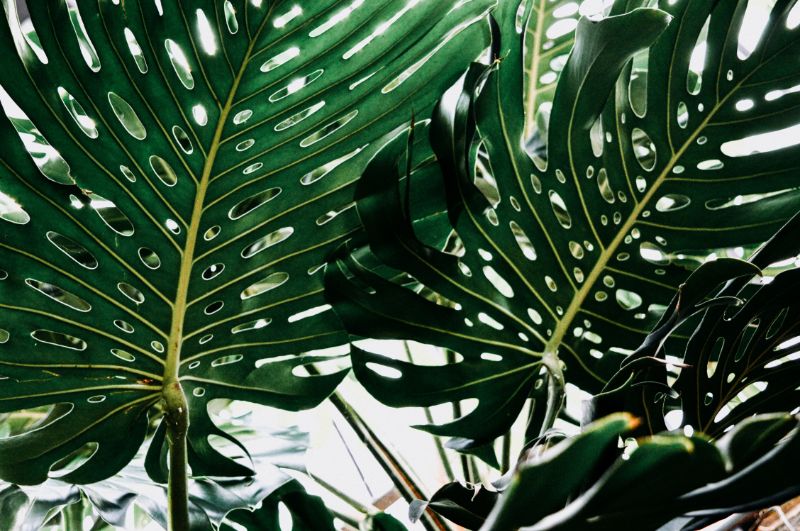
Adding soil nutrients will promote a quicker and healthier growth cycle. For best results, choose a well-draining peaty soil that is rich in nutrients.
This type of soil will retain moisture without remaining too wet. If the roots of the plant get too wet and don’t drain, the plant can start to rot due to the growth of bacteria.
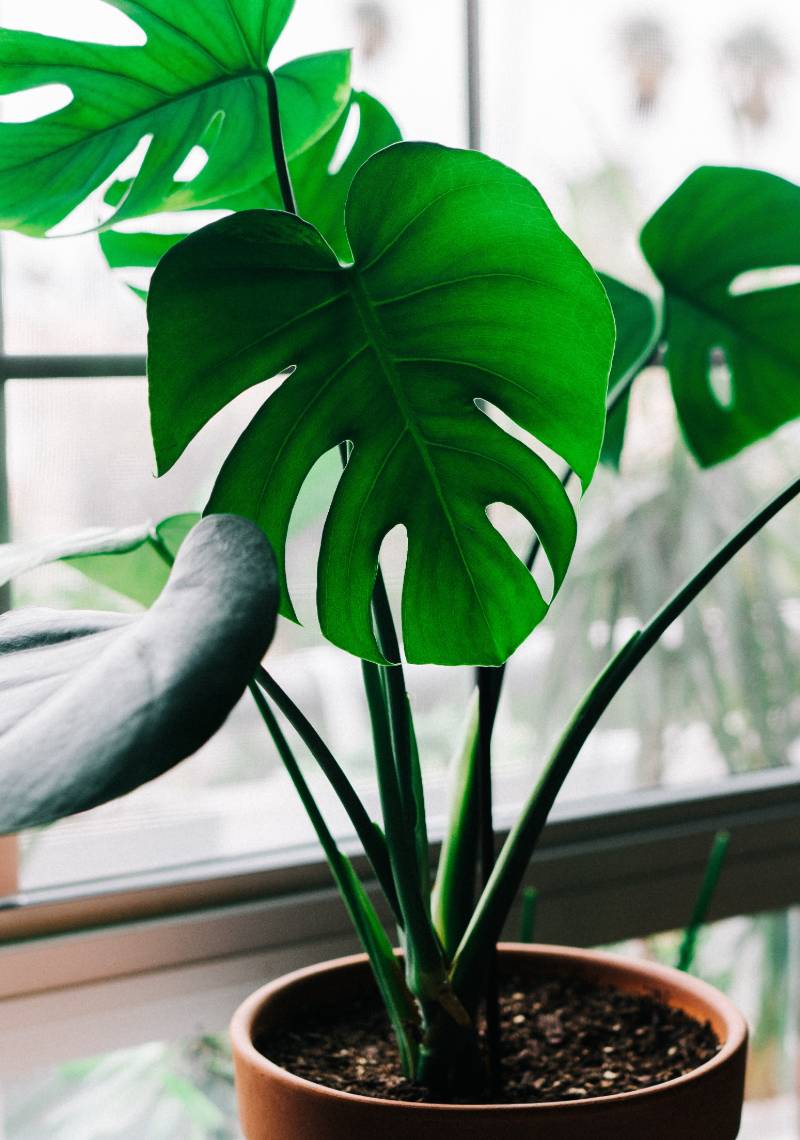
Some people have even chosen not to use any soil at all. Instead, they just place the plant in a jar or a glass vase, with the roots at the bottom. This way, the plant won’t rot because of the absence of bacteria in freshwater.
However, you must replace the water more frequently and it can be more difficult for the plant to get all the nutrients it needs.
If planting outdoors, find a spot that is well-draining or elevated so that you won’t drown your plant.
The conditions must still be warm and if there is no humidity, just spray your plant regularly with water. Also, continue to use a good fertilizer as for indoor plants.
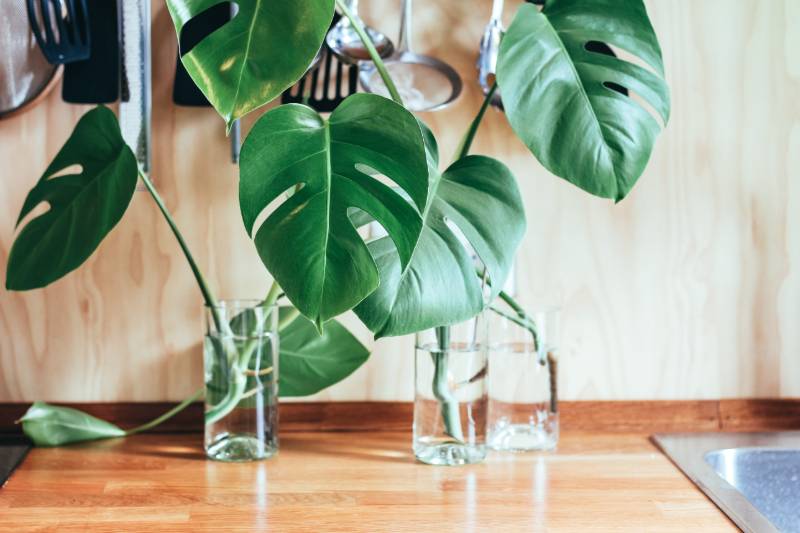
Potting
A healthy plant needs space for its roots to grow. As Monstera plants grow fairly quickly, it’s important to repot your plant every year. Buy a new pot of around 5cm larger than the previous one.
Choose a pot that is deep enough to give the roots room to spread and insert a stake up which the plant can climb. It’s important to give your plant support unless you choose to create a hanging plant.
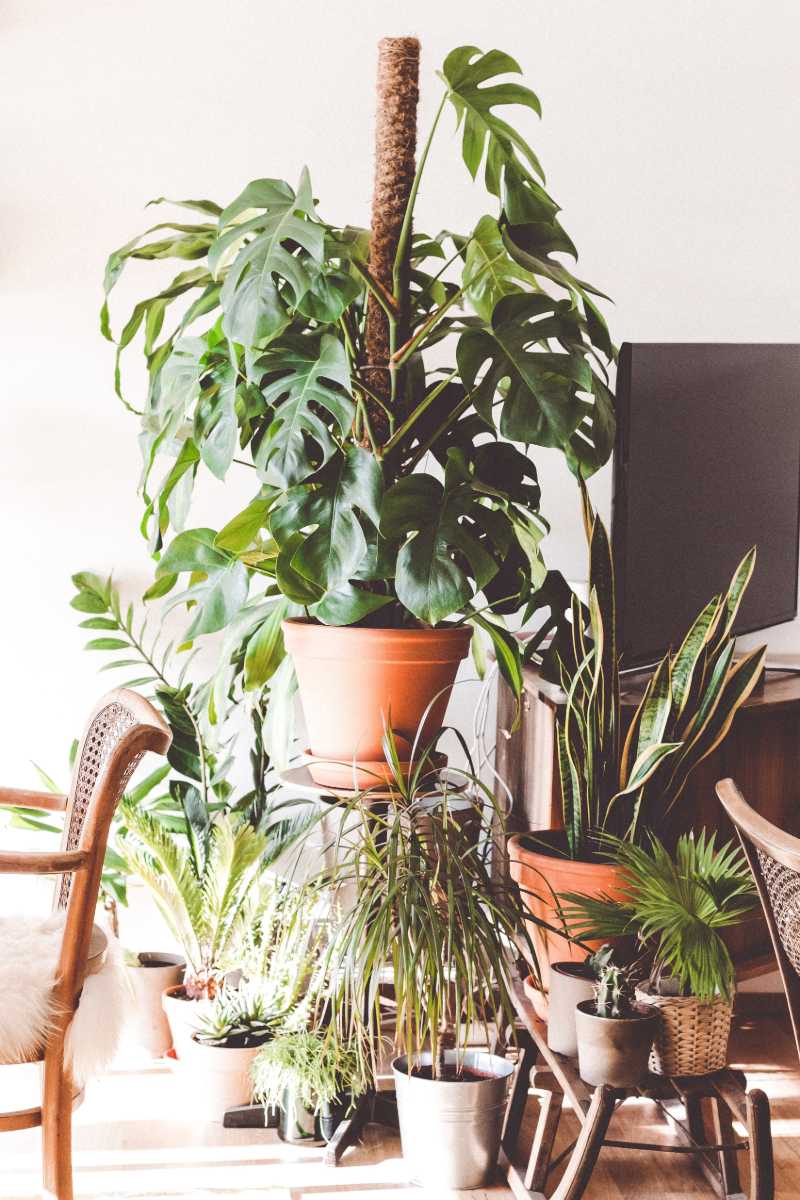
Before putting your Monstera in the pot, fill a third with fresh soil then add the plant roots down. Then gradually fill up the rest of the pot by placing soil around the roots and stem.
When planting outdoors, you must dig a hole that is twice the size of your root ball. Then cover with soil until the aerial roots are covered.
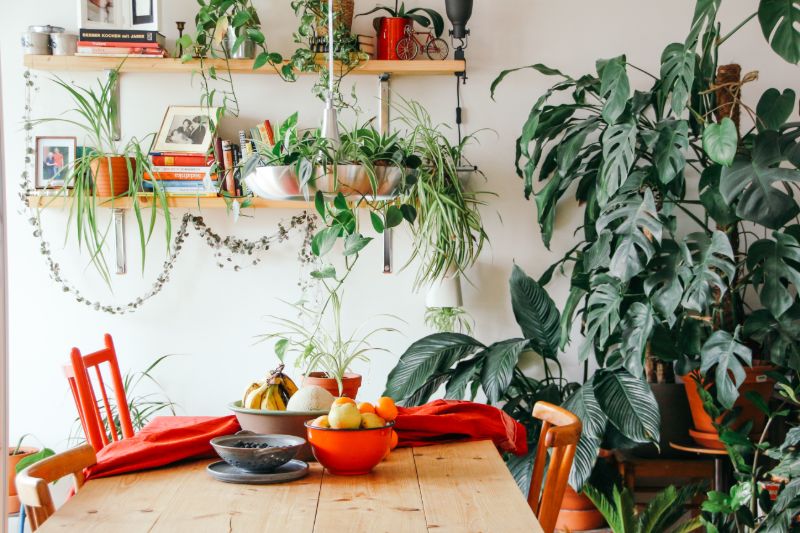
For indoor aerial roots, you can place a fresh layer of earth on top of the soil. Then bury the tips of the aerial roots into it.
Tip: One way to control the growth of Monstera plants is to keep them in the same pot once they reach the height you want.
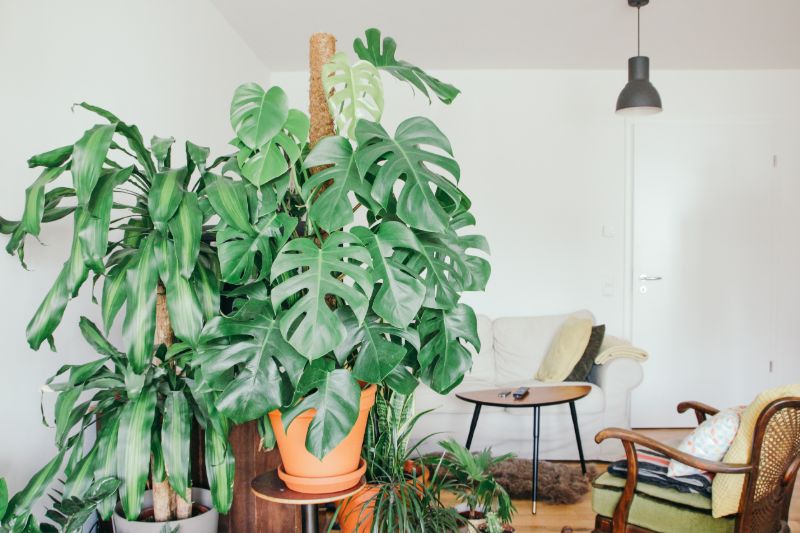
However, replacing the soil yearly is still necessary to keep your plant alive. If your Swiss Cheese plant responds differently and continues to grow, you can just trim it back to the size you want.
Good to know: Monstera plants don’t mind a bit of trimming and this will not damage them.
Light
In their natural habitat, Monstera plants will use trees as a host to climb. This way they reach the sunlight through the canopy of surrounding plants.
Giving your plant enough sunlight is crucial for quick growth and keeping your plant healthy.
Direct sunlight can damage the plant by burning the leaves and drying it out. By contrast, if Monstera plants don’t get indirect sunlight most of the day, they may still survive but they will grow much more slowly.
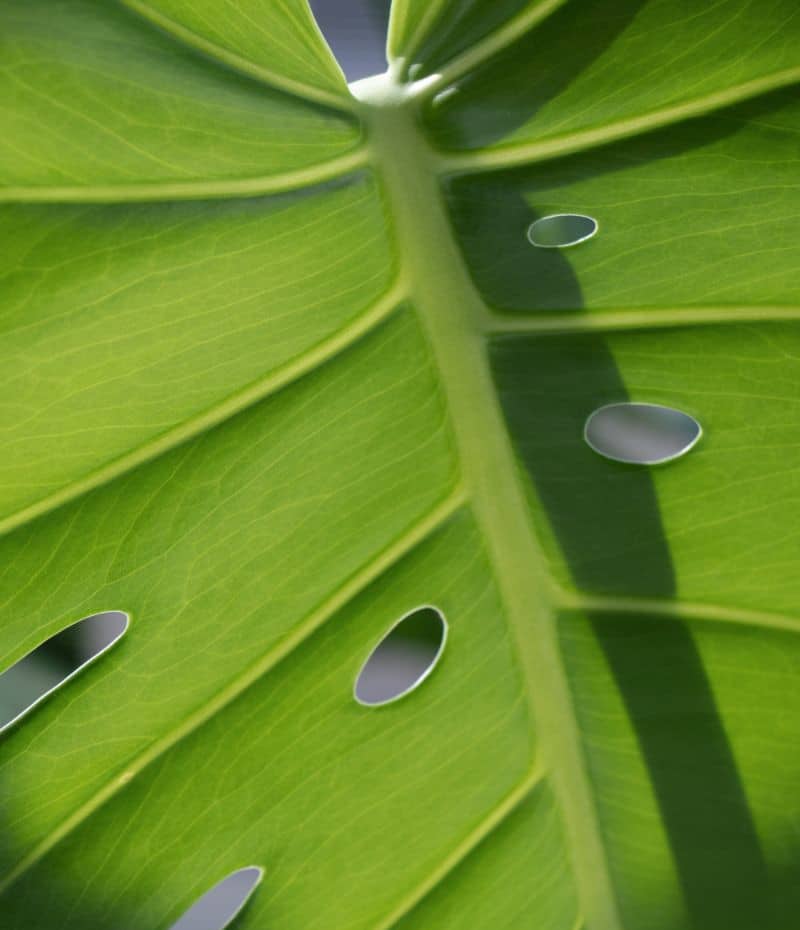
If you are growing your plants indoors, choose a spot with enough indirect sunlight to make your plant flourish.
Tip: It’s better to keep Monstera plants in a room with a constant regular temperature of around 25-30 degrees Celcius. This is the prime temperature for growing your Swiss Cheese plant.
Monstera Plant Care
Watering, fertilizing, repotting, and cleaning your Monstera plants is essential to keeping your plant healthy. Below you’ll find the essential Monstera plant care tips you need to know to keep your plant alive and thriving.
Watering
Like all other plants, Monstera plants need proper watering, especially since in the wild they grow in humid environments. Spraying the leaves a couple of times a week will help to recreate some of that humidity.
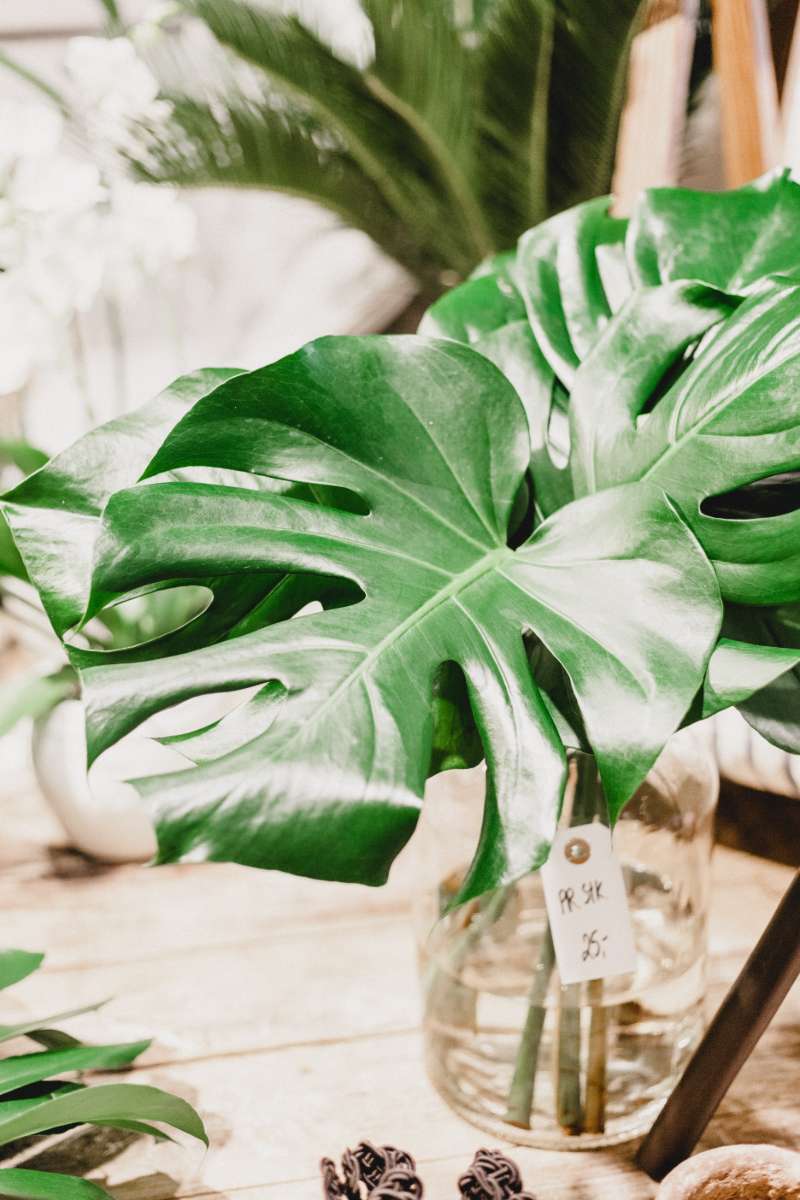
This will achieve your plant’s needs without having to move it into a warm greenhouse. This will also keep your plant nice and clean!
Also, it’s important to water your plant once or twice a week. If you can’t remember the last time you watered it, just feel the dryness of the soil.
If it’s dry up to 2-5cm deep, then this is the best time to water your plant.
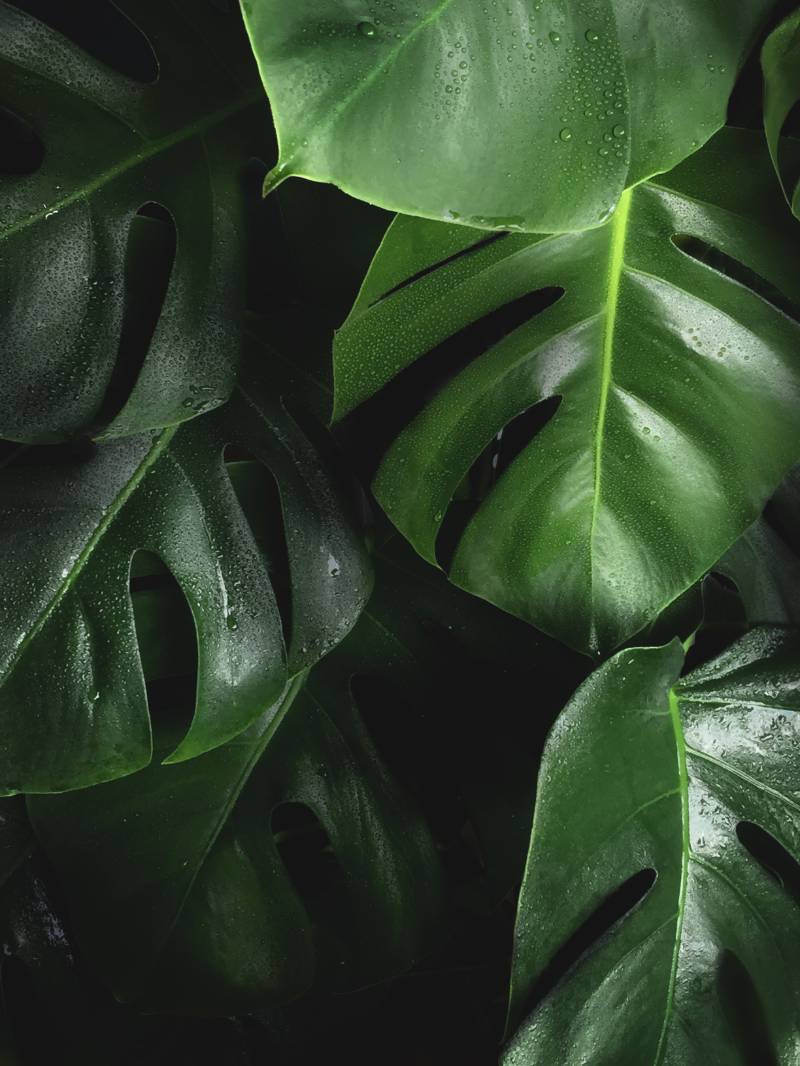
Fertilizer
Choosing the right fertilizer for you Monstera plants is important, as this improves the quality of nutrients in the soil. You can use a balanced 20-20-20 liquid solution with a mix of nitrogen, phosphorus, and potassium.
A fertilizer with a liquid ratio of 15-30-15 is also suitable for your Swiss Cheese plant. It can promote rapid root development and fast growth including budding. Here are some of the best Monstera plant fertilizers you can use.
Tip: In the summer, it’s better to fertilize your plant every 2 weeks. In the winter, every 4-6 weeks will suffice.
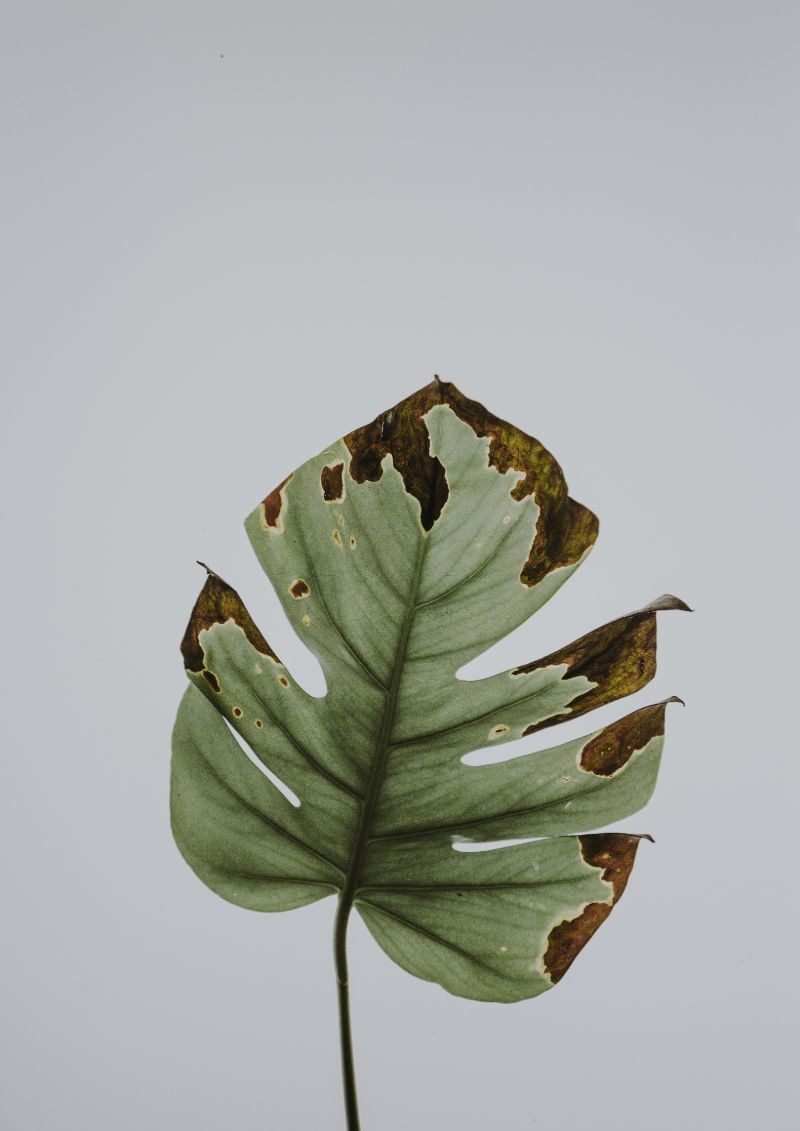
If your plant does not receive enough nutrients, is underwatered, or does not receive the sunlight it needs, it will stop growing and then it may die.
Pests
Spider mites are the most common Monstera pest. They are known to create yellow spots on the leaves. These are recognizable because they tend to aggregate and form white webs around your Monstera plants.
To get rid of these pests, you must spray your plant with water and clean it.
If the mites have totally covered your plant, cover it in an anti-insect agent or just warm water and place it in a clear bag.
Shut the bag and leave it for 2-3 days, then all the mites should be dead.
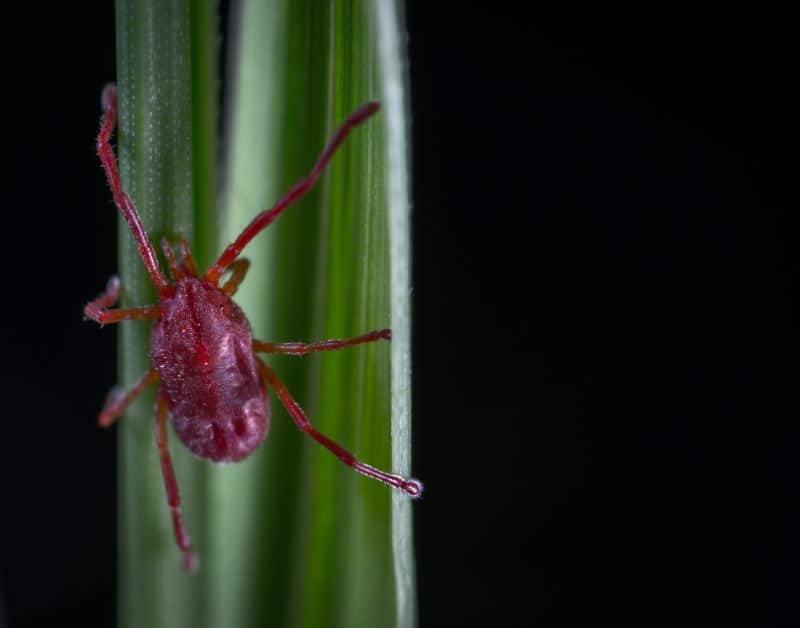
Scale insects are another pest, not as common but just as problematic.
When feeding on the plant, their saliva contains toxins that can kill the plant. They are recognizable due to the white spots they leave on the plants.
If you find these pests on your Monstera plants, use an insect controlling spray or oil. Other anti-pest agents are sticks that you put in the soil. These reach the rest of the plant via the roots and essentially make the plant toxic to pests.
We recommend starting with plant pest solutions like these top choices.
Although scale insects can damage your indoor plants all-year-round, they are most likely to occur in the winter months while your house is heated. This is the best time for pests to proliferate.
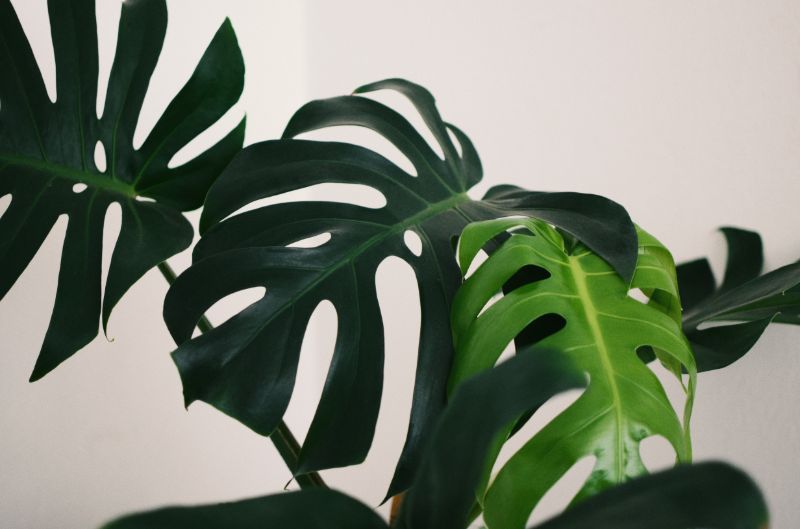
Diseases
The only reason your Swiss Cheese plant would catch diseases would be because you aren’t giving it the right care. This can be the lack or excess of sunlight, water, or plant fertilizer. Or a change in air humidity or temperature.
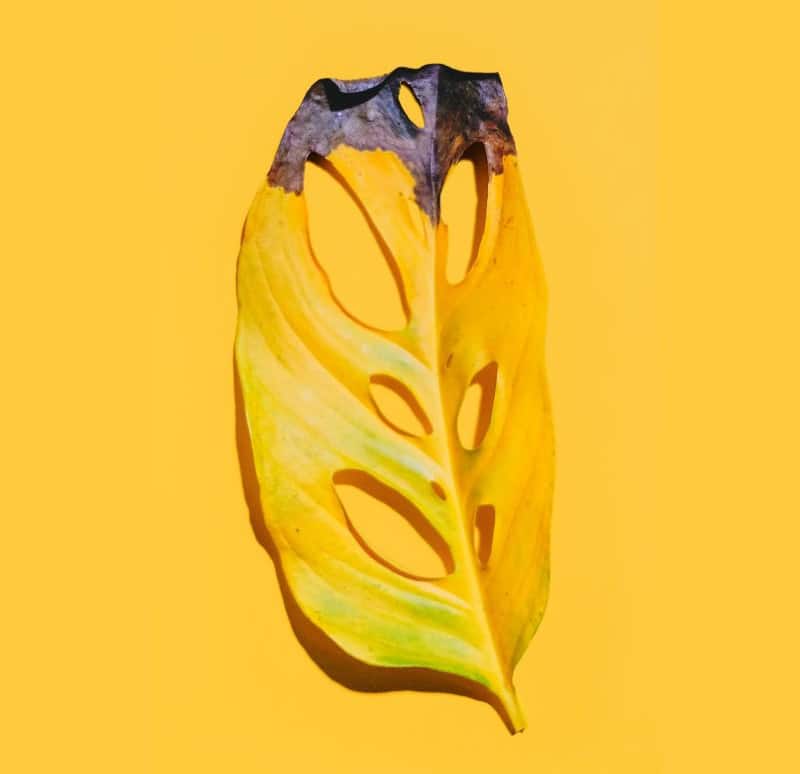
Here are some essential tips for recognizing and curing Monstera plant diseases:
- Leaf tips browning – Caused by a lack of humidity in the air or not spraying your plant with water frequently enough.
- Leaves yellowing – Related to over-watering your plant, or the soil not draining enough and retaining too much moisture around the roots. This can also cause bacteria to accumulate around the roots resulting in the same issue.
- Brown spots – The air temperature is too low.
- Fungi and plant infections – If the plant support stays wet or gets dirty, it may cause these.
Monstera Plant Flowers and Fruits
Certain Monstera varieties can grow flowers, but this only happens after 6-8 years of maturation. Monstera deliciosa and Monstera adansonii can bud and produce beautiful large white flowers.
Although this is rare and will usually only happen to outdoor plants, never say never.
If you want to encourage the process, keep in mind that the surrounding environment must be very similar in humidity and temperature to the plant’s original habitat in the rainforest.
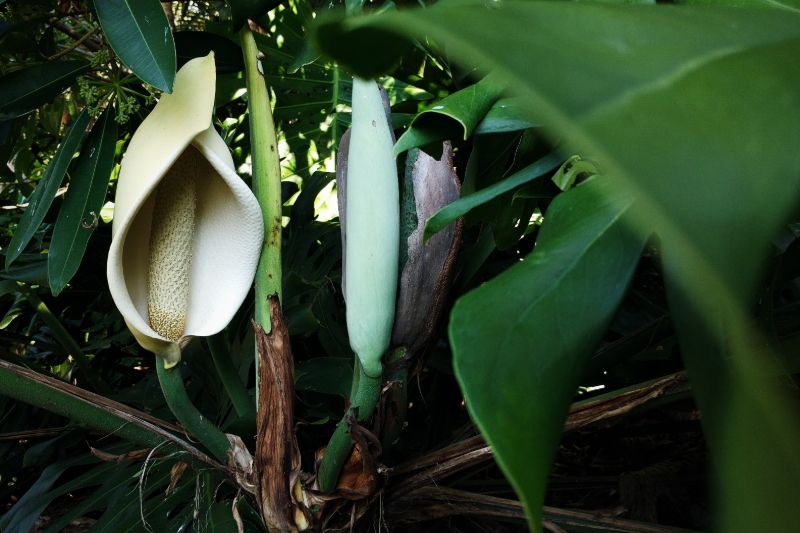
Monstera fruits are large, growing up to 25cm long and resembling corn or maize. These are edible and have a strong scent like pineapples.
Once the fruit turns a yellowish color, it’s starting to ripen. It’s fully ripe when it releases a sweet smell.
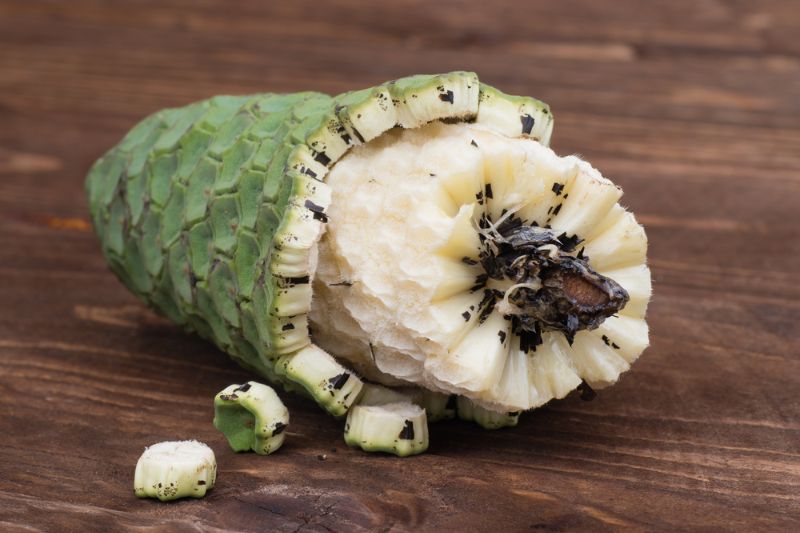
How to Propagate Monstera
Monstera plants are fairy easy to propagate. In fact, this is a great way to increase their presence in your home.
If you want to propagate your Monstera plant, it’s best to cut a section of the plant below the node of an aerial root.
You can plant the node directly in soil or place it in water. After a while, roots should start to grow and will create a whole new Monstera plant to add to your collection!
Monstera Plants for Sale
Looking to buy some Monstera plants? The easiest way to do it is online, especially in these time. Shopping for the plants online can also give you more options to choose from.
Here are some of the most popular Monstera varieties you can buy online right now. Make sure to read about the care tips for the specific type of plant you choose!
Monstera Plants Commonly Asked Questions
Monsteras are popular house plants, so we often hear people discussing them and asking questions. We thought to bring together the most frequent questions and answer them for you in this section. Find the answers below.
Should I cut the yellow leaves and rotting leaves off my Monstera?
Monstera plants are fairly hardy and can tolerate being in bad conditions for a while. However, it is preferable that you cut these parts of the plant off to let the healthy parts keep on growing. Water them on time and watch out for common diseases.
Where do you put Monstera plants indoors?
It is important to place your Monstera plant in an area with sufficient indirect sunlight. Do not place your plant in a spot with low light as this will slow the growing process. Also, avoid keeping it where direct sunlight could damage it.
Do Monstera leaves get bigger?
As the vine can grow up to 20 meters tall, the leaves grow with it and can get to over a meter in length. This all depends on the species of Monstera that you own and the environment it is planted in. The leaf growth will be limited if grown indoors in a small pot but unlimited if grown outdoors in the soil.
How much light does a Monstera need?
Monsteras need bright indirect light, the more, the better. This is what they usually get in their natural environment. You want to avoid exposing them to direct sunlight which can burn them. These are not plants to grow in the shade, either! Read more about Monstera plant care.
Not Your Average Monster
If you’ve followed us so far, you’ll probably agree with us that there’s nothing monstrous about Monsteras.
On the contrary, Monstera plants and beautiful and undemanding and quite striking anywhere you put them–in the best possible way.
We hope you’ve already chosen one or two to bring into your home, or that you will do so soon. Enjoy the tropical jungle vibe that your Monstera plants bring into your home or backyard!
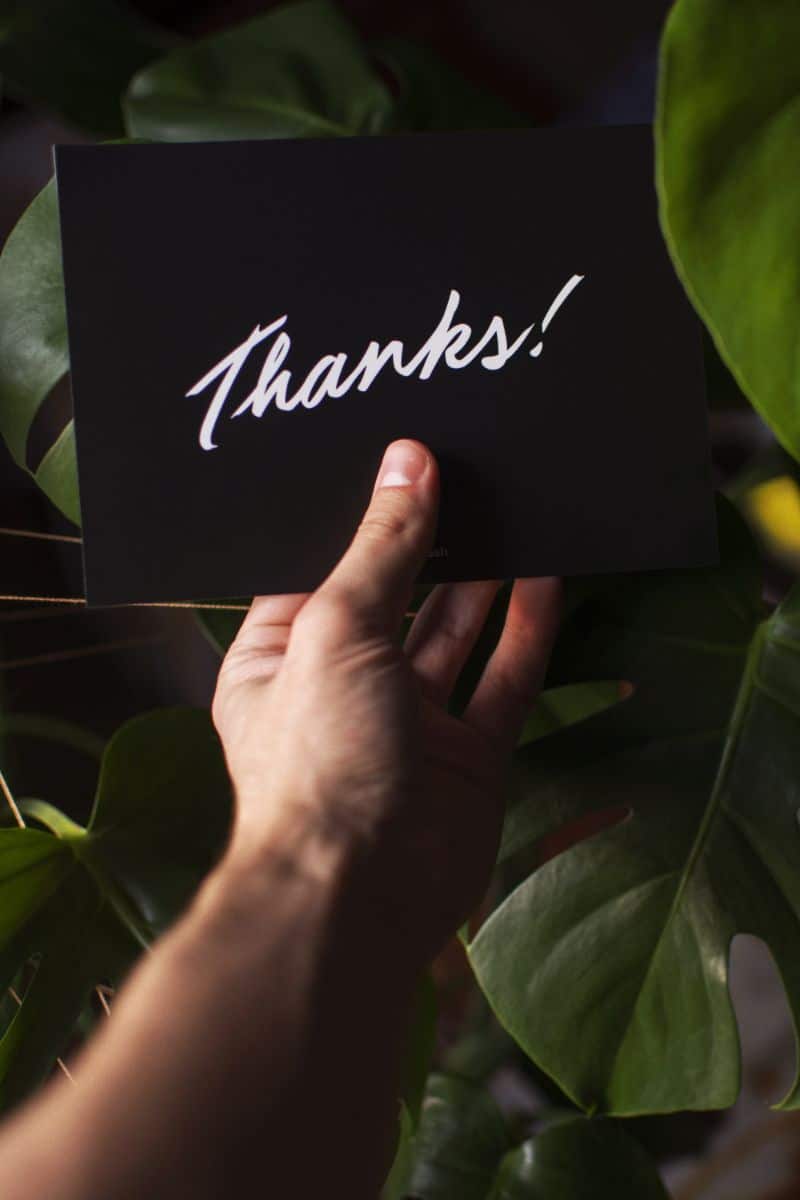
If you have any additional questions we have not answered please reach out to us or leave a reply in the comments section below. We’d love to hear from you!

Leave a Reply